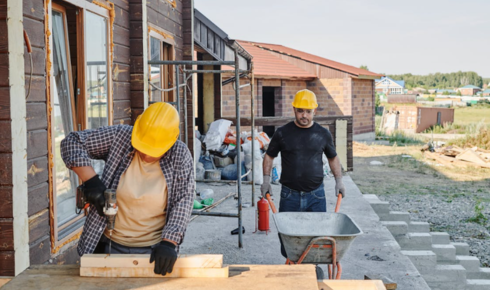Main Trends Reshaping Construction
Innovative practices in construction, such as off-site construction, automation, and digital coordination, are accelerating project completion rates and cost reductions, highlighting the need for industry-wide adaptation.
The construction industry is rapidly evolving, with new approaches like modular building, prefabrication, and advanced material sourcing transforming project execution. For instance, when durability is vital—such as in the energy, chemical, or mining industries—builders are leveraging specialized solutions like custom Stellite parts to maintain reliability under extreme conditions. These custom components optimize operational performance and extend equipment lifespan, directly impacting overall project sustainability and bottom-line performance.
Overcoming Key Barriers in the Industry
Construction workflows are vulnerable to material shortages, fluctuating costs, supply chains, and skilled labor scarcity. Industry leaders are adopting agile scheduling, geographically diverse materials, and strong supplier relationships. Clear communication and centralized project management software ensure projects stay on track and within budget, essential for project success.
The Role of Sustainability in Modern Projects
Sustainable construction is becoming more critical due to environmental regulations and client expectations. Buildings are designed with lower energy usage, waste, and long-term impact. Green-certified buildings use 25% less energy, emit 34% less carbon, and provide healthier environments. Project teams also see cost-efficiency and long-term value. Lifecycle assessments balance cost, usability, and environmental stewardship.
Adoption of Digital Tools and Smart Technology
Construction technology is increasingly crucial for competitiveness, with handheld devices, cloud-based systems, drones, and 3D models for daily reporting, accurate site analysis, and digital twins. These tools improve productivity, reduce downtime, and enhance communication. Augmented reality and virtual walkthroughs increase client satisfaction and project buy-in, making the future of construction as reliant on data and software.
Collaborative Approaches for Effective Delivery
Integrated Project Delivery (IPD) is gaining popularity in construction due to its integration of builders, architects, engineers, and owners. It builds trust, accelerates decision-making, and more equitably allocates risks and rewards. Regular cross-disciplinary meetings, project dashboards, and real-time feedback loops are essential tools for effective collaboration.
Building a Resilient Workforce
Construction companies are investing in education, training, and diversity to address the shortage of skilled workers. Formal apprenticeships and on-the-job upskilling ensure employees understand the latest codes and technologies. Diversity and inclusion open pathways for underrepresented groups, widening the talent pool. Organizations that foster workforce development see better project outcomes, safety records, improved morale, and lower turnover.
Safety Standards and Innovation in Practice
Construction is undergoing significant improvements with the use of wearable sensors, drones, and digital checklists. These measures save lives and money, decreasing workplace injuries due to smart gear and tech-driven training. Safety is now integrated into every stage, ensuring better protection and preventing incidents.
Future Perspectives in Construction
The construction sector’s future depends on constant adaptation to urban patterns, regulatory pressures, and new technologies. Despite these changes, collaboration, innovation, and adaptability remain vital. Builders prepare for bold, sustainable, and future-proof structures using advanced materials, skilled teams, and digital technology.
Tags: custom Stellite parts
